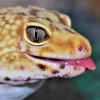Hello all! This is my first anting season (I started in April of this year) and I now have a lot of queens (around 20 now, though I have had more that have died or were not reproducing) that I am looking after. Most just have brood, though I have had a few with workers and have a couple of issues getting them from the stage of only having a few workers, to the stage where the colony is big enough (at least 50 workers) to put into a formicarium.
1. When a test tube setup runs low on water, or becomes very moldy, I cannot get the ants to a new setup. I have tried taping a tube to the end, covering up the new tube and putting a light on the old tube. I have tried this at least 5 times with different colonies (most were Solenopsis, though I have tried with Pheidole as well) and it never works for me. I have tried leaving the other tube in the light for multiple days, I have tried tilting the tubes so that the old tube is upside down and the new one is below it right-side up, it just never works. I have tried shaking them into a new tube. I have tried gently moving the eggs, queen, and workers to a new tube. Both of those techniques have typically ended poorly. (They either stop reproducing, many workers die over the next few days, or the queen actually dies.) How do you handle moving queens and/or workers to a new test tube setup, and when do you decide that they actually need a new setup?
2. When a queen only has 1-8 workers, I can easily pull out the cotton plug and add food on a piece of wax paper. When she has 8-30 workers, it becomes much more difficult making sure that I have no escapees. How do you feed these small colonies in the tube? I have also tried putting these tubes in small tupperware containers (like an outworld) and putting the food just outside of the tube. Typically, I will end up with a bunch of dead workers that got stranded outside of the tube.
Thank you in advance for your help!
















